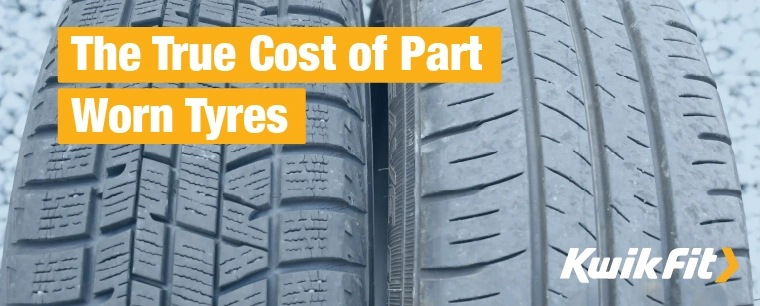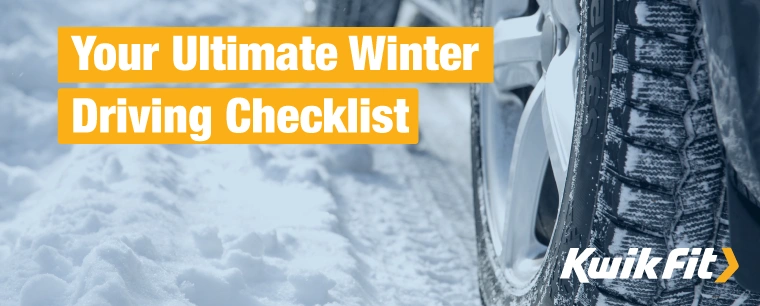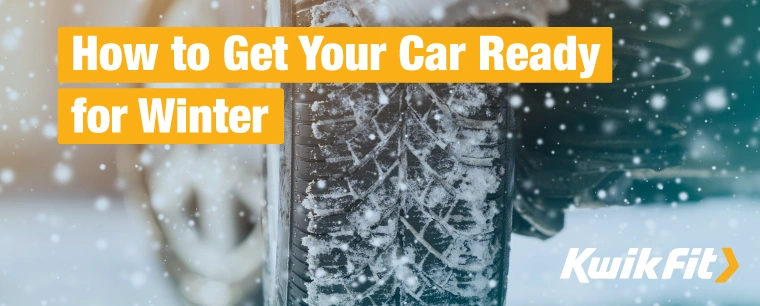The True Cost of Part Worn Tyres
Jack Dreyer | Tuesday 2nd April 2024 11:00am

Everybody loves a bargain, especially when it comes to your car. When you need new tyres, the lure of cheap, part worn replacement tyres can be tempting. However, are they a safe choice for your vehicle?
Many drivers are not aware of the safety risks of part worn tyres and with no knowledge of the tyre’s history, you have to ask yourself why the tyre is being resold: if the tyre’s condition is of a high enough quality, then why is it no longer on the vehicle it was originally fitted to?
In some cases, part worn tyres have come from cars that have been scrapped, while others are from cars that have been in accidents. While these part worn tyres may look good to the untrained eye, they could hide a number of issues, such as sidewall damage, which could put the safety of you and your passengers at risk.
Just how safe are part worn tyres?
With retailers being candid about the fact that the tyres they are selling are part worn, and used tyres being readily available on the high street and online, it’s understandable that many people would think that they are perfectly safe to use. However, while the act of selling part worn tyres is not illegal, there are rules under the Motor Vehicle Tyres (Safety) Regulations 1994 that state the minimum requirements for any part worn tyre being sold; this includes structural integrity and tread quality. The National Tyre Distributors Association (NTDA) previously inspected thousands of tyres and found that a staggering 98% were not compliant with these regulations.
What are the dangers of part worn tyres?
New tyres, such as those made by Continental, come with 8mm of tyre tread depth as standard. In contrast, most part worn tyres only have 3mm of tread depth because they are shipped over from countries where that is the legal limit. Although this is above the UK legal limit of 1.6mm of tread depth, tyres with a tread depth of 3mm or below don’t perform well in terms of safety, and you will likely have to purchase new tyres a lot sooner than you’d hoped. Many part worn tyres are actually sold with even less than 3mm of tread depth and are close to, if not below, the legal limit.
Part worn tyres are often sold damaged
Another issue with part worn tyres is that they are often sold already damaged, increasing the likelihood of an accident. The type of damage can range from tears to bulges and can be visible or hidden. This can compromise the structural integrity of the tyre. In addition, part worn tyres may have foreign objects embedded in them, such as shards of glass, which can increase the chances of experiencing a puncture or a tyre blowout.
Tyresafe have conducted research into how many part worn tyres are being sold in the UK. They discovered that around 5.5 million part worn tyres are sold in the UK each year and 99% of retailers sell tyres that are in a state unfit for driving. Although there are regulations surrounding the sale of part worn tyres, many tyres that are sold do not meet these standards. Part worn tyres should be in good condition with no visible bulges in the sidewall. Additionally, the tyres should have a minimum of 2mm of tread and be marked clearly as part worn on the tyre sidewalls. An investigation, in partnership with BBC Scotland, demonstrated that only 2 in 10 were sold legally. The other eight either had incorrect markings or were unroadworthy. TyreSafe have also undertaken many investigations into part worn tyres, including with the Trading Standards Authority, to help keep drivers safe on the roads.
Part worn tyres cost breakdown
Many still argue that part worn tyres are still cheaper, despite more frequent replacement. However, If you were to work out the price-per-millimetre of legal tread on a part worn tyre compared to a brand new one with a full 8mm of tread depth, you would find that it actually works out cheaper in the long run to buy the new tyre, especially when you take into account the tyre fitting costs for all those additional part worn tyres you would be using.
On the Tyresafe website, you can find out more about the true cost of part worn tyres, including examples of unsafe part worn tyres offered for sale by unscrupulous dealers, as well as just how much part worn tyre costs add up. If you are considering purchasing part worn tyres over a brand new set, it’s worth visiting the site and weighing up the real cost difference between a new tyre and a used one – it’s negligible over time.

How can I tell when my tyres need changing?
As mentioned above, tread depths and damage, such as tears and bulges, are good indicators that your tyres need changing. That being said, there are other indicators that vehicle owners should be aware of. For instance, if you have owned your tyres for 10 years or driven over 20,000 miles, your tyres should be replaced. You can refer to the markings on your tyres to determine when they were manufactured.
Additionally, extra vibration can be an indication of tyre problems. You should expect some vibration when travelling on rough roads, however, if you notice a significant amount of vibration while driving this could be a sign of a damaged tyre.
If you do encounter any issues with your tyres, it’s always best to seek advice from a professional before replacing them.
Tyre services at Kwik Fit
At Kwik Fit, we only fit brand new tyres from our own stock to ensure we know the origin of every tyre that we fit – giving you absolute peace of mind.
If you’re looking for new tyres, tyre fitting, or any other tyre services, we offer a whole range of solutions designed to keep your car at its best. You can find out more on our tyres page, or alternatively, you can visit your local Kwik Fit centre.
Any facts, figures and prices shown in our blog articles are correct at time of publication.
Featured Articles
Is Your Car Battery Ready for Winter?
Monday 11th November 2024
Is the UK on the verge of ‘the coldest winter for 50 years?’ Even if El Niño doesn't hit the UK this winter, reduce the risk of a winter breakdown by making sure your car battery is winter-ready.
Your Ultimate Winter Driving Checklist
Monday 31st October 2022
Driving in the colder months presents many challenges. Breakdowns are far more common in winter, so make sure you’re prepared with these essentials.
How to Get Your Car Ready for Winter
Wednesday 28th September 2022
Winter can be a harsh season for your car but planning ahead by carrying out some basic maintenance and packing some essential kit should help you avoid a winter breakdown.







